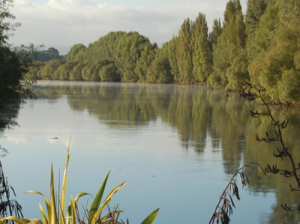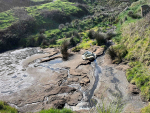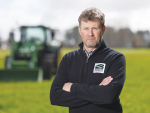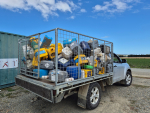Farmers involved in the recent Federated Farmers-led case study to test the on-farm implications of Healthy Rivers Wai Ora have urged Waikato landowners to get on board with the proposed plan change process.
The Heathy Rivers/Wai Ora: On-farm Project saw 13 independent farms and 11 Fonterra farms, led through the process of developing farm environment plans (FEPs). The FEPs are a key part of the proposed plan change and are designed to identify current contaminant losses and where those contaminants can leave properties. They also detail what action landowners will take to reduce those losses in a certain timeframe.
A drystock farmer from Whitehall in Cambridge Graham Pinnell was part of the study. He has been progressively fencing waterways on his property and carrying out riparian planting.
“Roughly 20 years ago I was made aware of the water quality issues in the Waikato River and how streams on my farm were contributing to that. Taking preventative measures felt like the right thing to do.
“The work I’ve done includes riparian fencing and native bush retirement and planting. It has allowed me to better manage my pasture, minimise stream and bank damage and the bush remnants look better and are a pleasure to walk through.”
Pinnell says he is looking for long-term sustainability on his farm and win-win outcomes.
“My message to other farmers is be engaged and take an interest in the proposed plan. We all need to step up and make a submission so that the hearings panel know how to strike the right balance for the future. I hope the council and industry can work together on this.
“I believe the proposed plan gets in the way of realistic solutions. We all want better water quality, but we have to keep in mind what’s realistic in certain timeframes. Farmers who have tried to do the right thing in the past will be penalised for having a low nitrogen reference point. Rather than a grandparent scheme, I think it would be great if there was an obligation with the farm environment plans to include good management practices for nitrogen leaching.”
The case study project estimated the cost of implementing the current plan for his property would be about $42,000 relating to loss of productive land, fencing waterways and ongoing maintenance costs.
There were aspects of the plan Pinnell has questions about. “The grandparenting nitrogen leaching part of the plan doesn’t feel right.”
Dairy farmer Andrew Reymer from Ohaupo was also part of the study. He started fencing his waterways 30 years ago and about four years ago installed a new effluent storage pond.
“Meeting the regional council’s and Fonterra standards, as part of the Clean Streams Accord, has always been a priority, along with animal welfare and financial viability.”
He says landowners will be required to do more work as a result of Healthy Rivers Wai Ora, particularly in the areas of recording and reporting, but he didn’t believe it was overwhelming.
“I feel we’re already on the right path, so don’t find the proposed plan change too daunting.”
Reymer believes the proposed plan change was about trying to get all landowners moving in the right direction with regard to good management practices and managing water quality.
“My message to other farmers is we should all embrace the plan change and get on board. Most of it is very achievable, manageable and easy to be responsible for. Some of us will be hit harder than others but most dairy farmers I know are on the right track.”
The case study project suggested the cost for his property would be around $20,000 to $30,000 with ongoing maintenance of about $5000 per year.
His biggest concern was around the regional council having enough resources to manage the implementation of the plan.
Council chief executive Vaughan Payne says the Healthy Rivers Wai Ora implementation plan was currently being developed and would include how the council would need to organise staff around managing the implementation. “We are in the submission process at present and ultimately the result of that will determine where we need to go with implementing the proposed plan.”
Payne says the council would also be making its own submission on the proposed plan. “We fully expect some of that will align with what landowners and our stakeholders are already telling us.”
The Federated Farmers project was jointly funded by Waikato Regional Council, Federated Farmers Waikato, Fonterra, DairyNZ and the Foundation for Arable Research. The case study report results suggest the average cost of preparing a FEP could be around $4692, while average on farm management to implement Healthy Rivers/Wai Ora ranged from $30,000 to $35,000 for dairy farms and between $170,000 to $221,000 for drystock farms depending on how the plan is interpreted.
Payne says the on farm costs came down to interpretations in the proposed plan. “We have seen some questionable figures being quoted. We know there are some anomalies in the plan to iron out but my personal view is these figures may also be the result of the plan being interpreted incorrectly or personal choices made by the farmer.
“Costs will vary significantly from landowner to landowner and that will depend on the amount of work they have already done towards implementing good management practice on their farms.”
The proposed plan was publicly notified on October 22. It seeks to improve water quality in the Waipa and Waikato rivers by managing nitrogen, phosphorus, sediment and bacteria entering waterways. The council has provided an extended period for submissions to allow people time to understand the proposed plan change and make informed submissions.
Submissions close at 5pm on March 8, 2017.



















